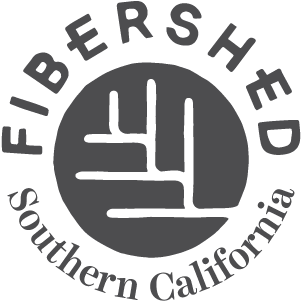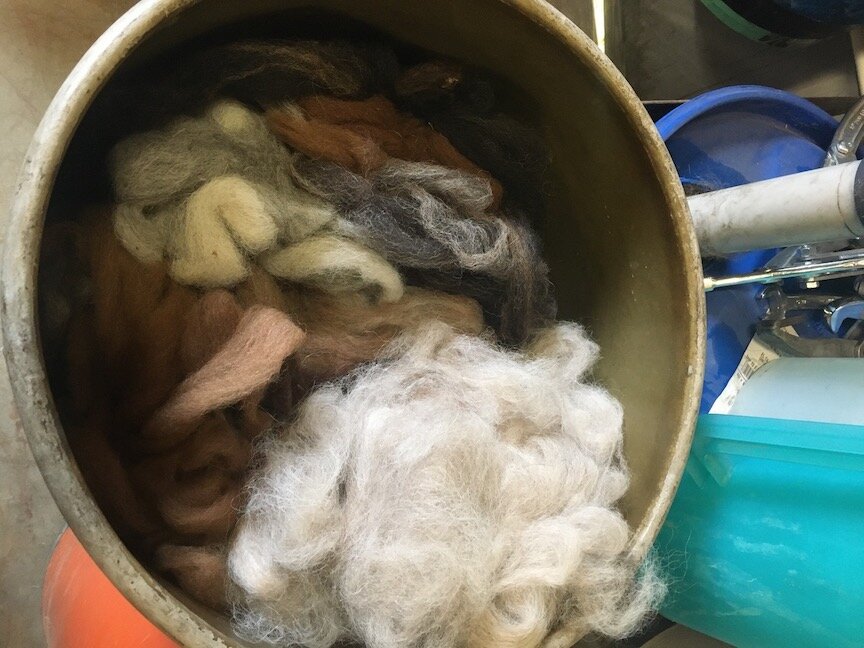A Simpler Time Mill, El Cajon, CA
Dave and Barbara Davies are the force behind A Simpler Time Alpacas & Mill. A family owned and operated business on the outskirts of San Diego, A Simpler Time has been processing mostly alpaca fiber but also wool, cashmere, mohair, and llama, since 2003. Over the years other mills have shut down or relocated, leaving A Simpler Time as the only mill within the Southern California Fibershed region. Our visit gave us a clearer picture of why we need to invest in rebuilding our textile infrastructure.
The Davies have a herd of 35 Huacaya alpaca at the farm. Huacaya is one of two breeds of alpaca, the other being Suri. Of the 3.7 million alpaca world-wide, more than 90% are estimated to be Huayaca. The Davies’ run a breeding program, sell herdsires and harvest fiber which they process into roving and yarn.
Ranchers from all over the country send their fiber to A Simpler Time Mill for processing. Jeremy, our tour guide, informed us that most of the alpaca fiber from Hawaii is processed at A Simpler Time as it is the closest mill to the islands. Currently there is a 6- 8 month lead time for processing fiber, which is quite literally stacked to the rafters in the barn which houses the mill.
There are many steps in processing fiber:
Dirt and other debris are removed
The fiber is washed, going through 4 cycles and then dried
Fibers are picked, or separated, using a conveyor through a drum with spikes
4 cycles through the fiber separator divides the coarse from the softer fiber
2 oz. batches are run through the carder which makes all the fibers go in one direction. If you stop processing at this step, you end up with roving
Alpaca roving
The draw frame spreads fibers into a consistent density
The spinner makes single ply yarn
The plyer spins 2 single ply threads into 1
Steaming sets the twist so it doesn’t come undone
The yarn is then wound onto cones
The skein winder produces the lovely skeins you see in retail shops
Cones of alpaca yarn
There are 22 recognized colors of alpaca fiber ranging from black and chocolate brown through grey, fawn and white.
Max, who did not get the memo that he’s a non-working dog at the Mill, took his duties as Official Greeter quite seriously and performed them with much enthusiasm.





